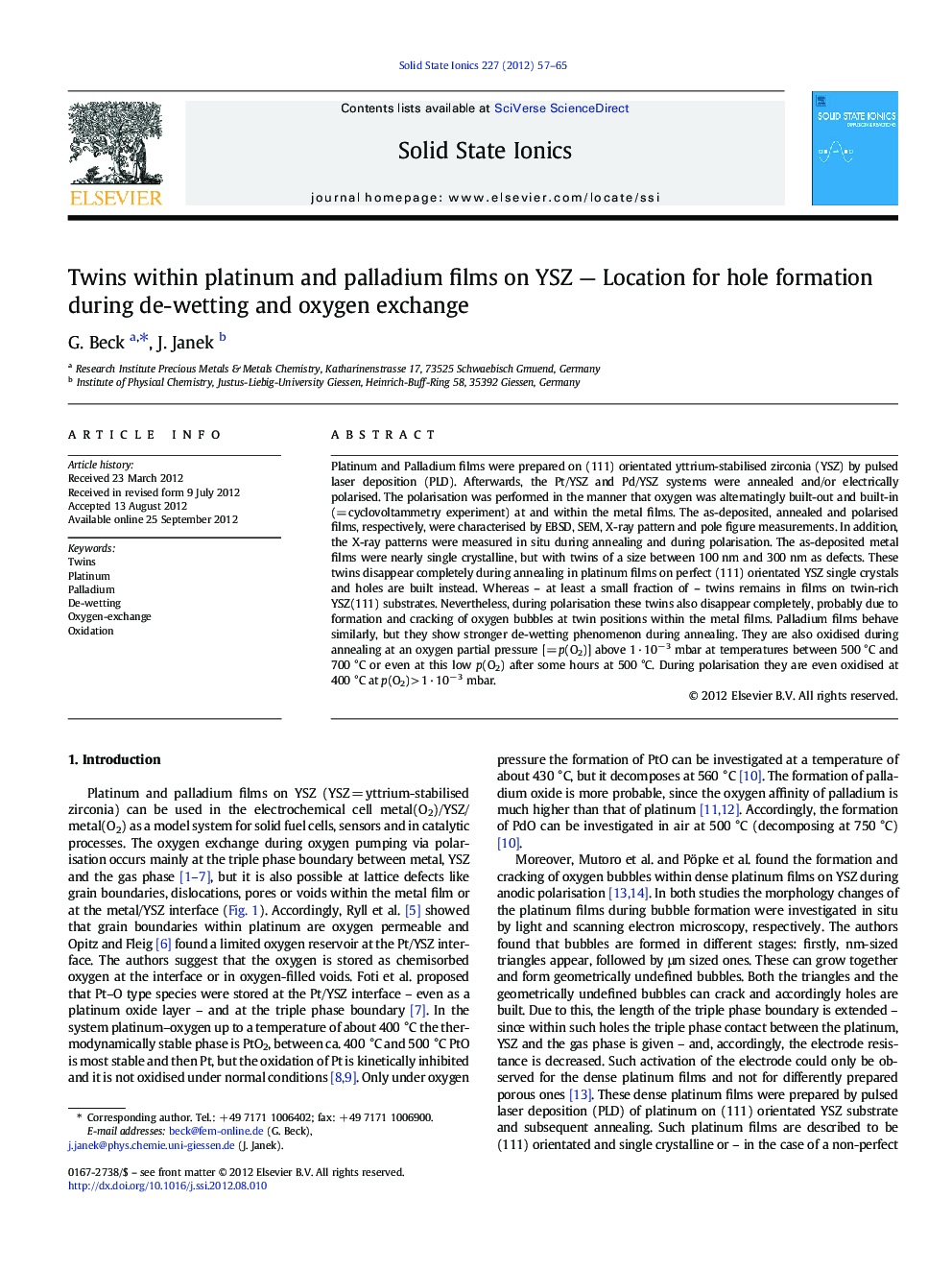| Article ID | Journal | Published Year | Pages | File Type |
|---|---|---|---|---|
| 1296130 | Solid State Ionics | 2012 | 9 Pages |
Platinum and Palladium films were prepared on (111) orientated yttrium-stabilised zirconia (YSZ) by pulsed laser deposition (PLD). Afterwards, the Pt/YSZ and Pd/YSZ systems were annealed and/or electrically polarised. The polarisation was performed in the manner that oxygen was alternatingly built-out and built-in (= cyclovoltammetry experiment) at and within the metal films. The as-deposited, annealed and polarised films, respectively, were characterised by EBSD, SEM, X-ray pattern and pole figure measurements. In addition, the X-ray patterns were measured in situ during annealing and during polarisation. The as-deposited metal films were nearly single crystalline, but with twins of a size between 100 nm and 300 nm as defects. These twins disappear completely during annealing in platinum films on perfect (111) orientated YSZ single crystals and holes are built instead. Whereas – at least a small fraction of – twins remains in films on twin-rich YSZ(111) substrates. Nevertheless, during polarisation these twins also disappear completely, probably due to formation and cracking of oxygen bubbles at twin positions within the metal films. Palladium films behave similarly, but they show stronger de-wetting phenomenon during annealing. They are also oxidised during annealing at an oxygen partial pressure [= p(O2)] above 1 · 10− 3 mbar at temperatures between 500 °C and 700 °C or even at this low p(O2) after some hours at 500 °C. During polarisation they are even oxidised at 400 °C at p(O2) > 1 · 10− 3 mbar.
► Pt and Pd films with twins (being the only grains) were prepared on (111) YSZ. ► The Pt/YSZ and Pd/YSZ systems were annealed and/or electrically polarised. ► The twins are the location for hole formation during de-wetting or oxygen exchange.
